Affiliate links on Android Authority may earn us a commission. Learn more.
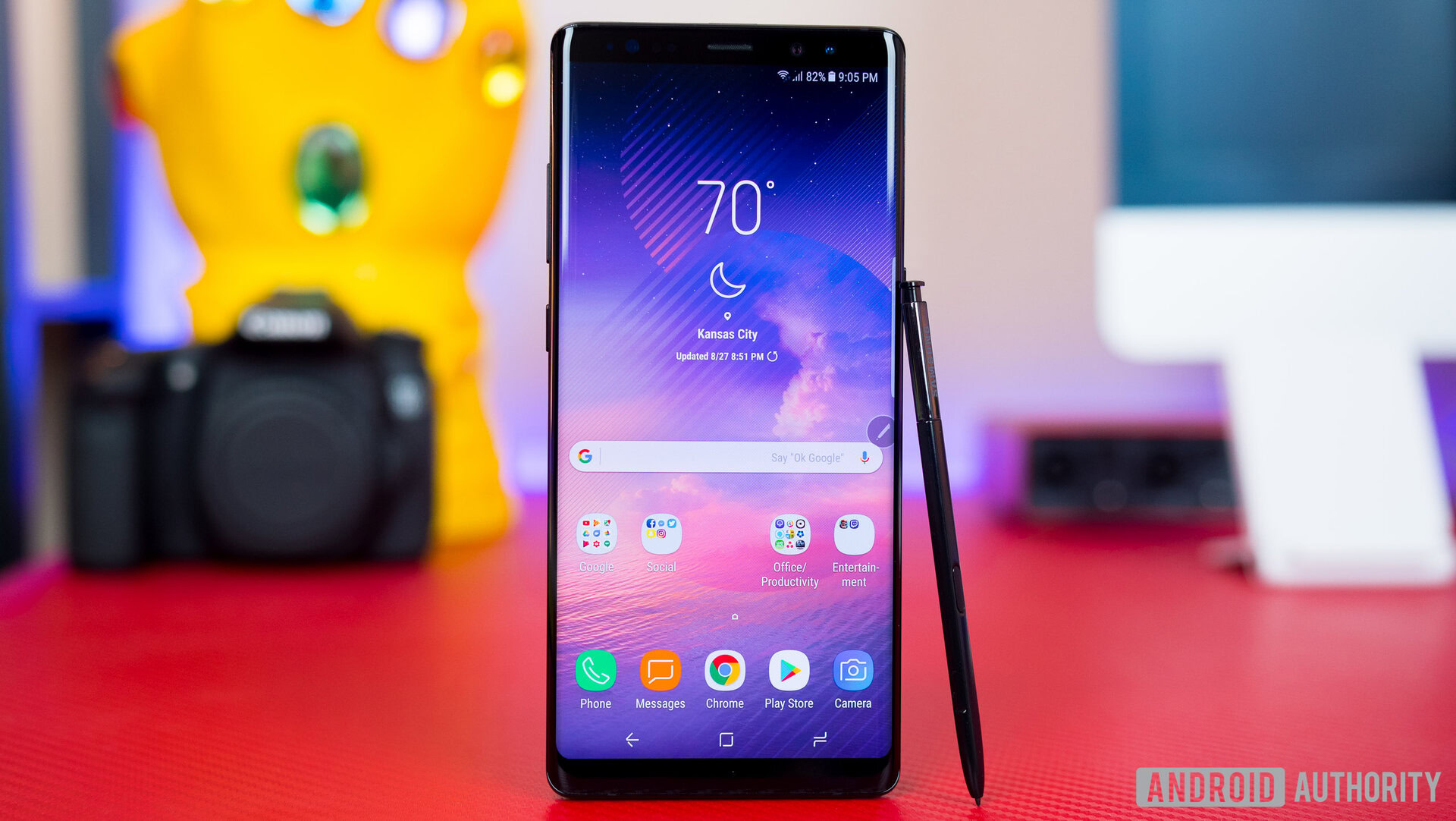
Samsung Galaxy Note 8
What we like
What we don't like
Our scores
Samsung Galaxy Note 8
After the disaster of last’s year Galaxy Note 7, Samsung is looking to redeem itself and the decision to continue with the Note brand is a rather bold one. Will the Galaxy Note 8 be able to rebuild the Note brand in a positive light and regain the trust of Samsung’s customers? And are there enough improvements to make it a top contender in the second half of 2017’s smartphone onslaught? Find out in our full Samsung Galaxy Note 8 review!
Design
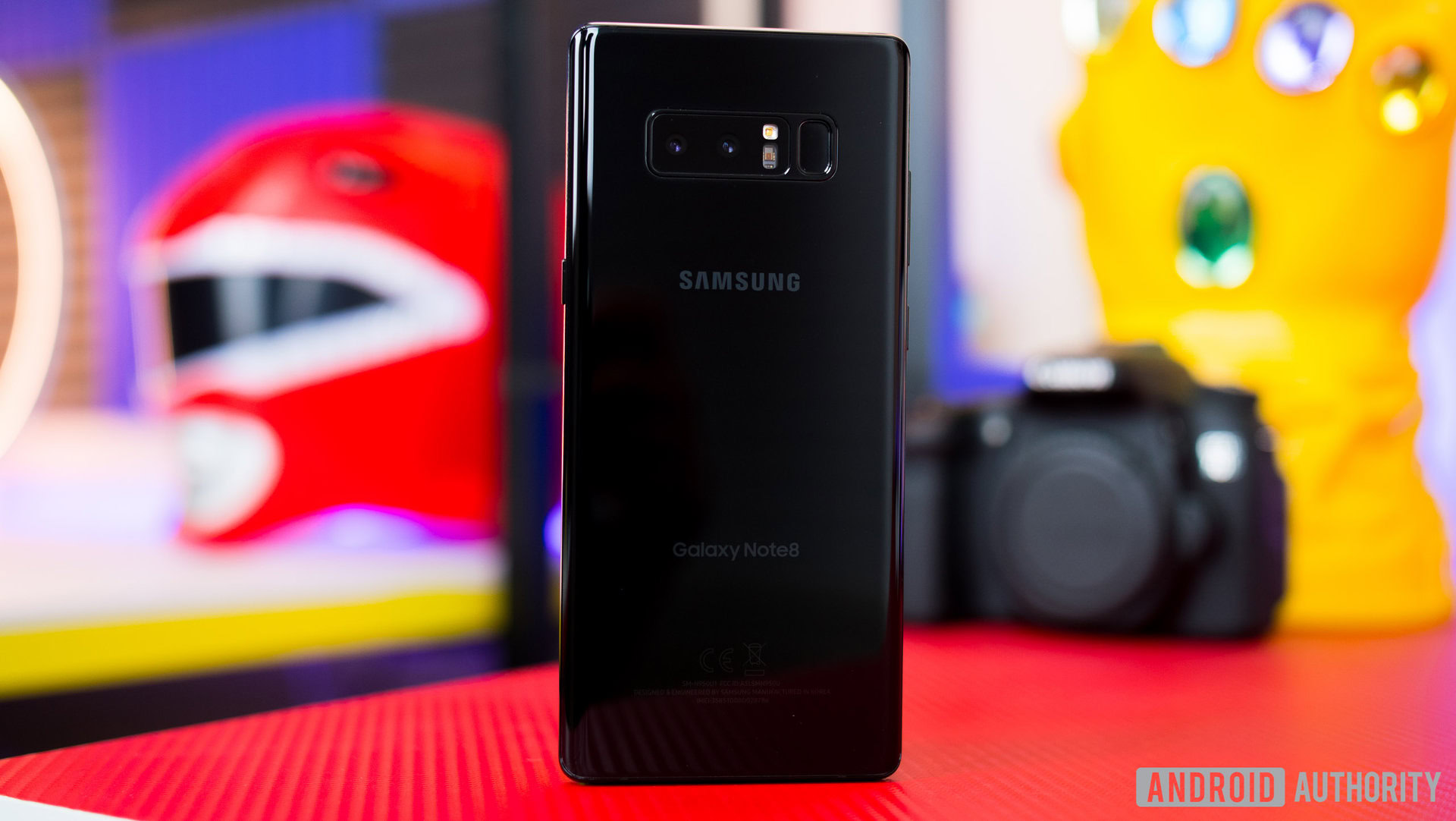
On the exterior, the Galaxy Note 8 delivers a very familiar design that we’ve gotten used to from Samsung over the last couple of years. Glass is the main material of choice filling up the entire front and back and a sturdy metal frame wrapping around the perimeter holds it all together. One thing that you’ll notice that is quite different from last year’s Note 7 or the more current Galaxy S8 is that the body is much more square and angular. Even the dual curved display is less pronounced this time around.
Read Next: Samsung Galaxy Note 9 vs Galaxy Note 8: Worth the upgrade?

Instead of a completely smooth taper between the glass and metal all the way around, the Note 8 has a much more distinct separation between the glass and metal and the sides are much flatter, giving a phone that’s usually slippery a lot more grip. Of course, the biggest drawback with any phone made predominantly of glass or any shiny materials is how prone it is to fingerprints. Depending on the color, it may be more or less visible but you’ll still want to keep a cleaning cloth handy if you want your phone looking pristine at all times.
The only other major cosmetic design change is that the camera housing on the back is black instead of being color matched with the body of the phone. On the black version it blends in seamlessly but on any other color you’ll get a visor-like appearance which looks pretty cool to my eyes but it’s a design choice that not everyone is going to like.
Display
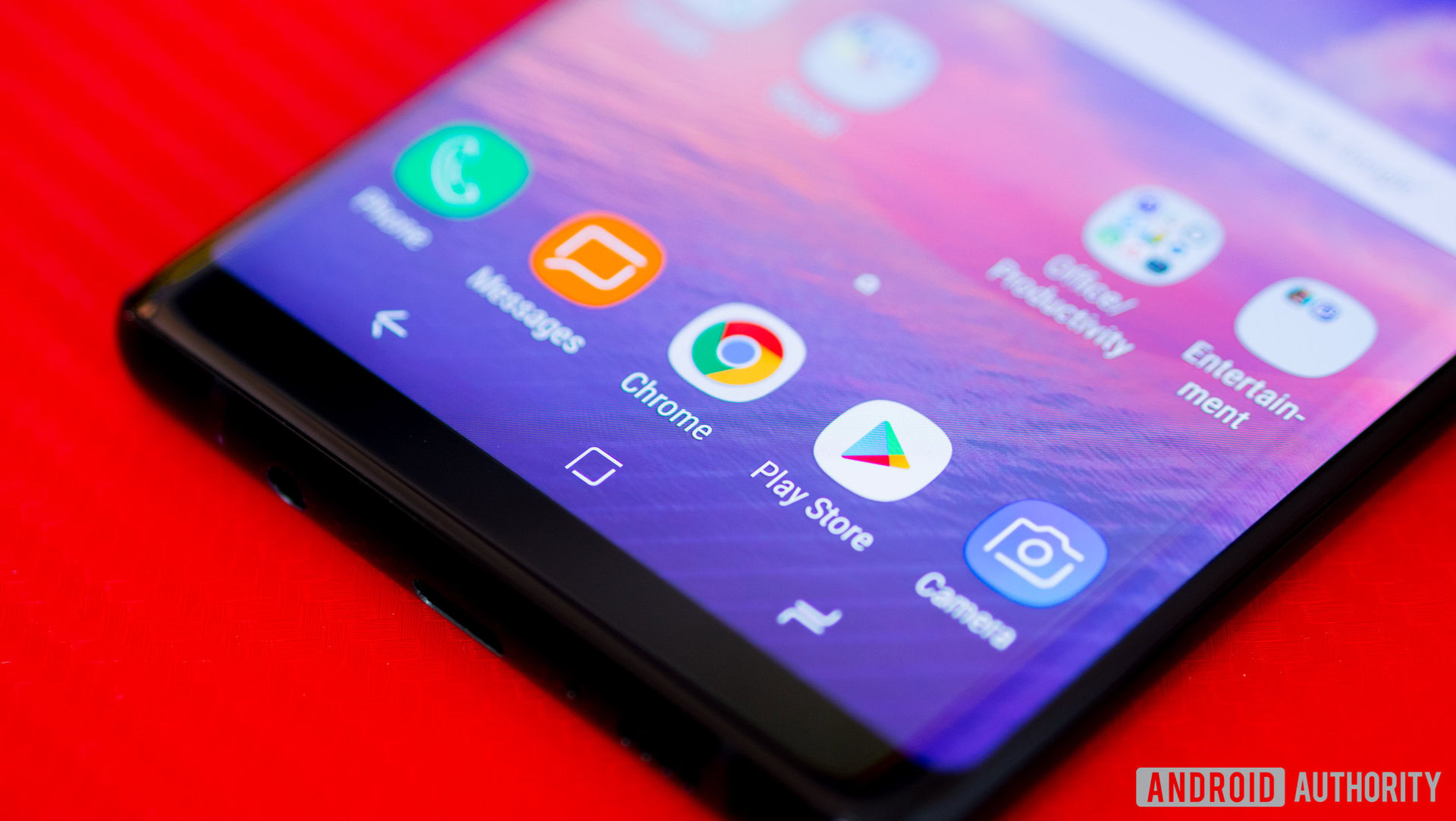
The infinity display that was first introduced with the Galaxy S8 has made it’s way over to the Note 8. This means super thin bezels on all sides and a screen that takes up almost the entire front. The thinner bezels allows Samsung to fit in the largest screen we’ve ever seen on a Galaxy Note.
Measuring in at 6.3 inches but with an 18.5:9 aspect ratio, the screen is much taller than it is wide and in comparison to last year’s Note 7 or the Fan Edition, the size difference is mostly noticeable in height while the change in width is almost undetectable by feel. The added height does make the phone quite tall but it doesn’t feel any less manageable or harder to operate than any other big screen Android phone currently available.
Despite its height, the Note 8 doesn't feel any less manageable or harder to operate than any other big screen Android phone.
The screen is the usual Samsung Super AMOLED technology that brings all the typical characteristics that we’ve seen on previous Samsung phones such as vibrant colors, high contrast, and inky dark blacks. With a resolution of 2,960 x 1,440, or 3K QHD+, it’s incredibly sharp but in order to enjoy the display to its fullest potential, you’ll have to change the display resolution in the settings as the phone defaults to 1080p the same way the Galaxy S8 does.
The Note 8’s display overall is absolutely gorgeous and the large size is fantastic for all kinds of use cases such as watching YouTube videos, playing games, casual web browsing, and productivity. It’s also bright enough that viewing the screen comfortably outdoors is a non-issue.
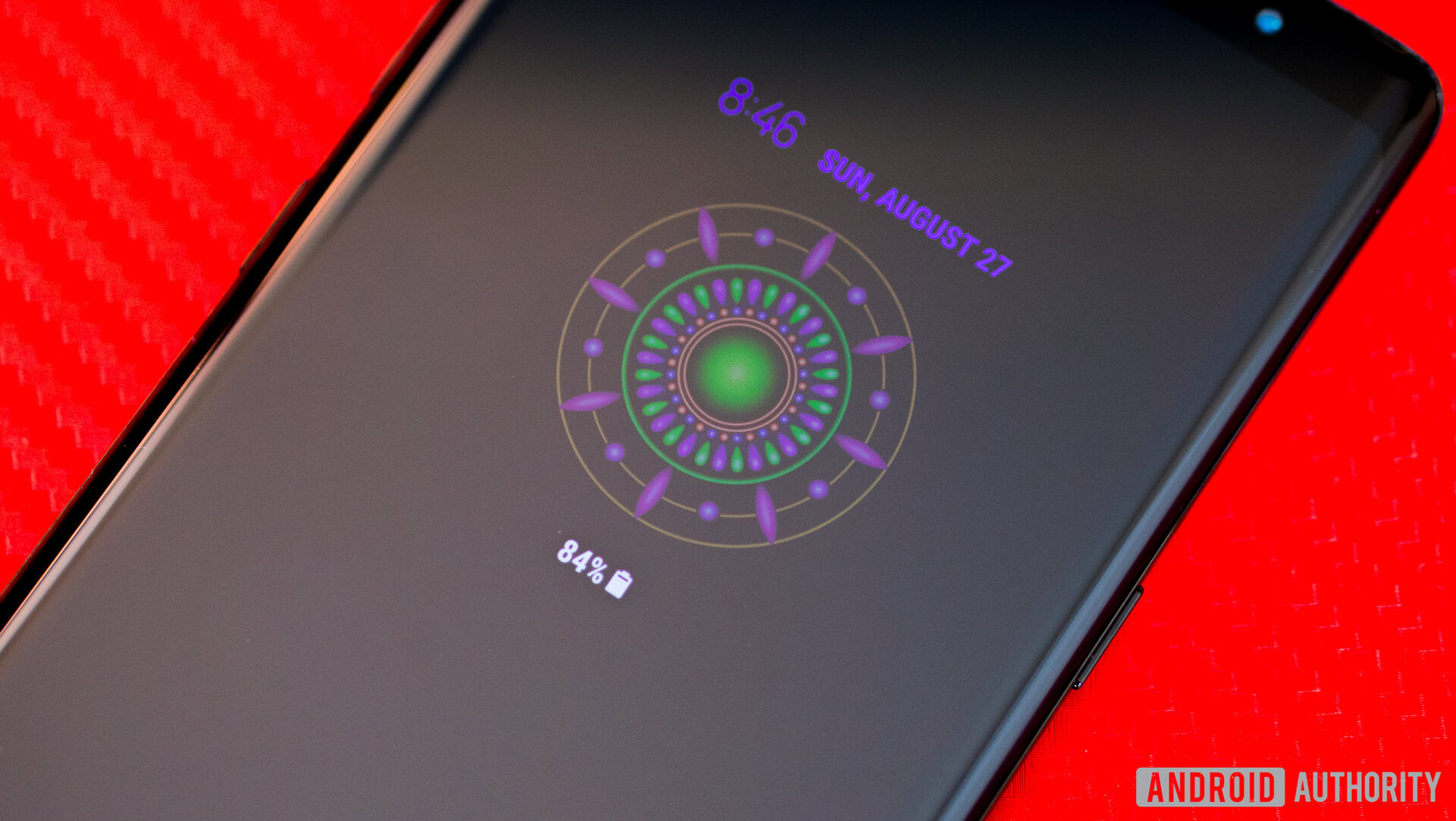
The big bonus with the Note 8's screen is its mobile HDR certification.
The big bonus with the Note 8’s screen is its mobile HDR certification meaning the phone can play back true HDR content that allows for better color accuracy and contrast.
HDR content is still somewhat scarce but should be a little easier to access (provided you have the right plan) due to the Note 8 recently being added to Netflix’s list of HDR supported devices.
Performance
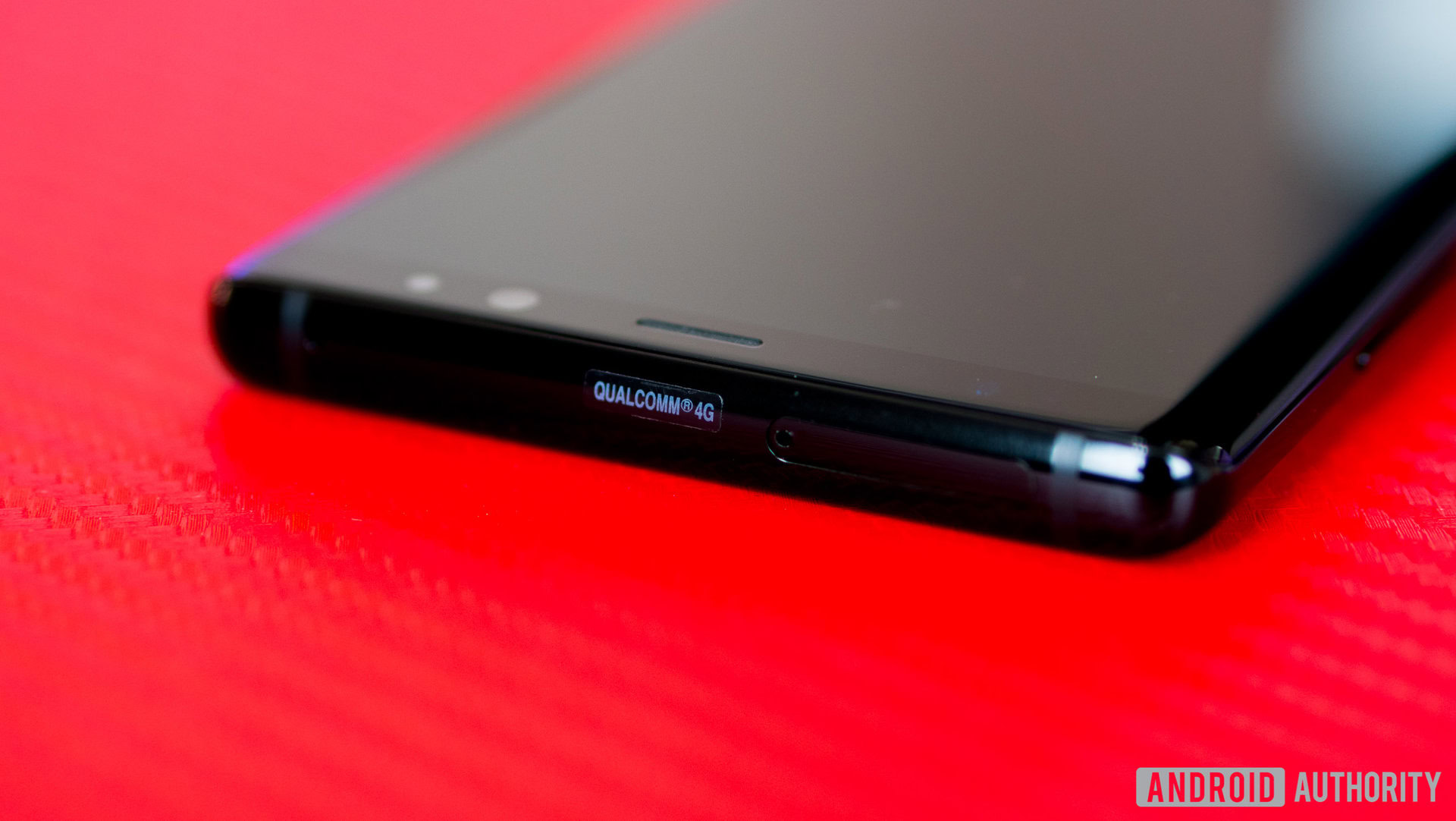
The increase in RAM is definitely a welcome change and it certainly helps the multitasking experience feel much smoother.
The Galaxy Note 8 checks all the right boxes in terms of 2017 flagship specs. There’s a Snapdragon 835 running the show but this year Samsung has bumped up the RAM to 6 GB. It’s not the first time we’ve seen Samsung put 6 GB of RAM on a phone but it’s the first time that it isn’t on a regional exclusive. The increase in RAM is definitely a welcome change especially for a device that’s meant to be a productivity/multimedia powerhouse and it certainly helps the multitasking experience feel much smoother.
The typical every day experience such as swiping and scrolling through menus, web browsing and jumping in and out of apps are also quite smooth and the Snapdragon 835 does a great job of handling more intense tasks such as playing high end games with very smooth frame rates.
Hardware
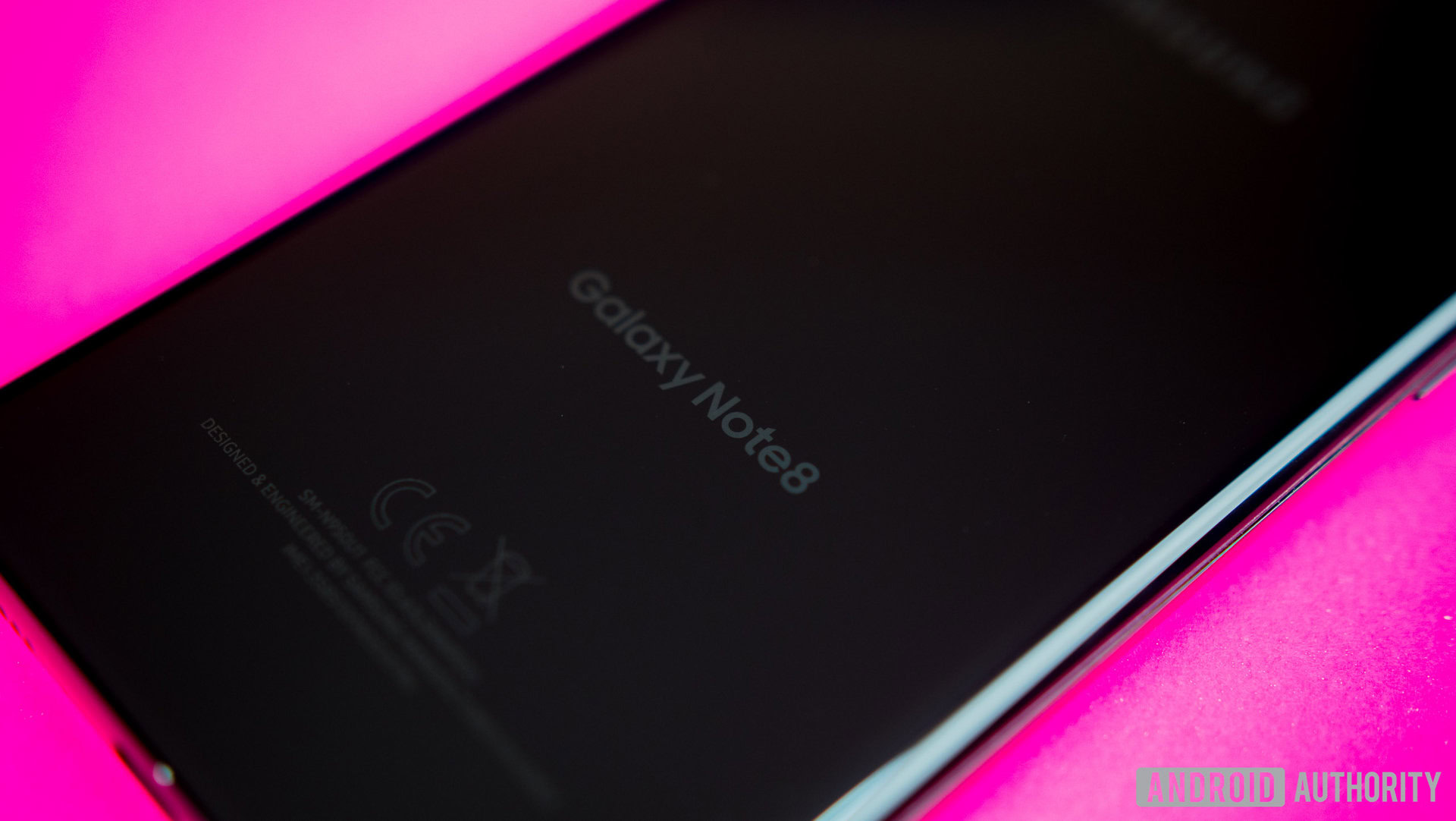
Obviously we can’t talk about the Note 8 without mentioning the S Pen, after all, this is the hallmark feature that defines the Galaxy Note line. The actual hardware of the S Pen itself remains practically identical to last year. It features the same clickable top, a 0.7 mm ballpoint-sized tip, and over 4,000 levels of pressure sensitivity. The major changes to the S Pen are really within the accompanying software features which we will dive into in the software portion of the review.
The actual hardware of the S Pen itself remains practically identical to last year.
Other hardware on the Note 8 includes pretty much everything that you would want except for the kitchen sink. There’s a microSD card slot for additional storage should you need more than what the phone offers internally (a 128 GB and 256 GB version were announced, but at launch we’re only getting the 64 GB base model).
Fast wireless charging capabilities, Bluetooth 5 and gigabit LTE support are all on board, and an IP68 certification means it is dust and water resistant and can withstand submersion in up to 1.5 meters for 30 minutes.
For all you headphone jack lovers out there, you'll be very happy to know that the Note 8 still has one.
For all you headphone jack lovers out there, you’ll be very happy to know that the Note 8 still has one as Samsung is one of the few smartphone manufacturers left that is choosing to keep this feature intact. At least for now.
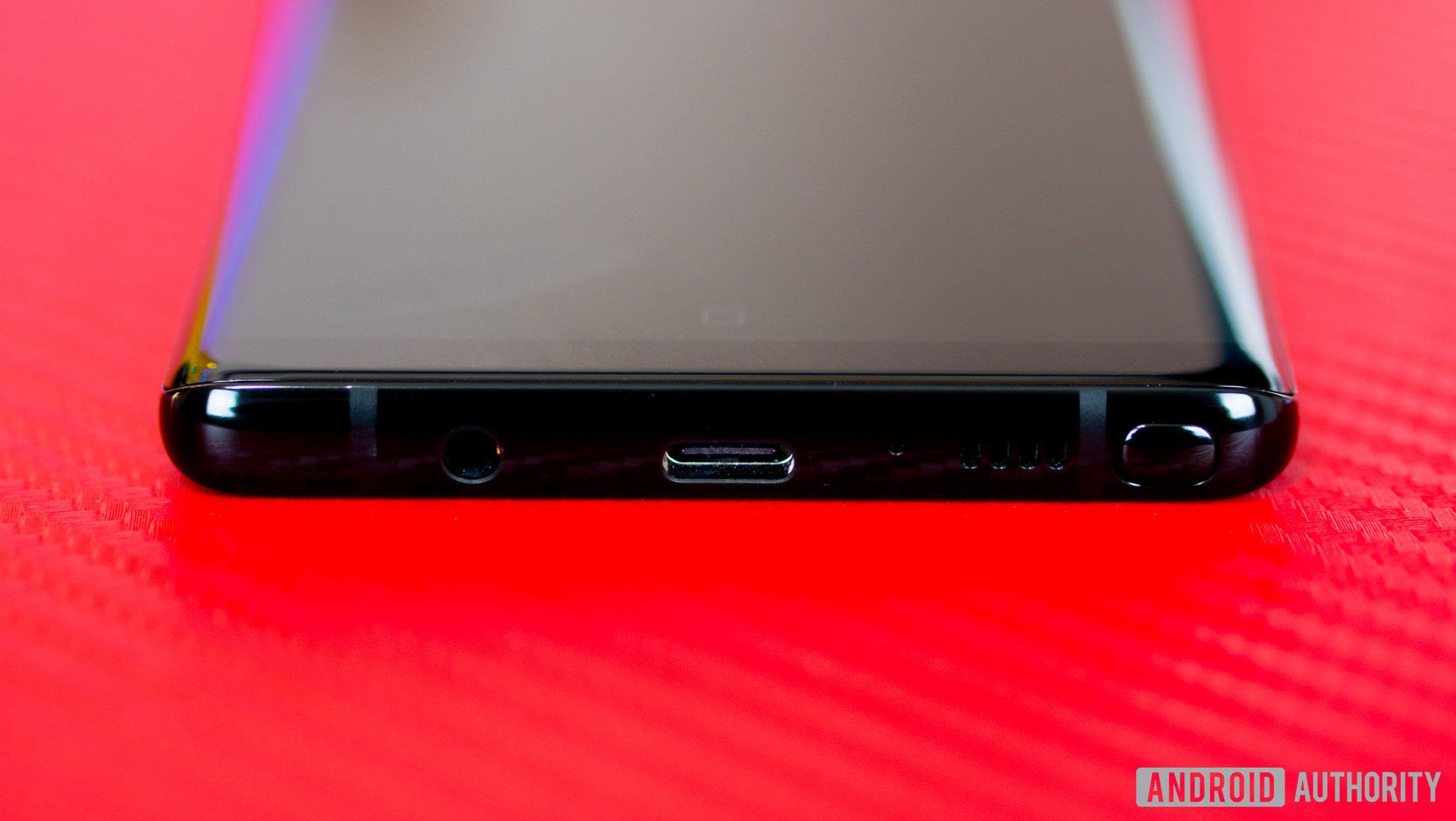
For external audio, the Note 8 doesn’t offer anything special and this has been a weakness of a lot of Samsung smartphones over the years. The Note 8 comes with a single bottom-firing speaker that is easily muffled by the palm of your hand when holding the phone in landscape and the audio quality can sound distorted at max volume. It’s certainly a serviceable speaker but audio is clearly an area that Samsung doesn’t put too much emphasis on improving. For those that expect more out of their smartphone audio, consider the LG V30 or the HTCU11.
Besides external audio, the other unfortunate part of the Note 8's hardware is the placement of the fingerprint sensor.
The other unfortunate part of the Note 8’s hardware is the placement of the fingerprint sensor. It still sits on the back to the side of the camera which isn’t the most ergonomic location, but at least Samsung did make some improvements to it that makes this one surprisingly better to use than the one found on the S8.
The fingerprint sensor is now slightly more recessed making it easier to find by feel and Samsung repositioned the camera flash and heart rate monitor to sit in between the cameras and fingerprint sensor giving you more room for error when reaching for the fingerprint sensor.
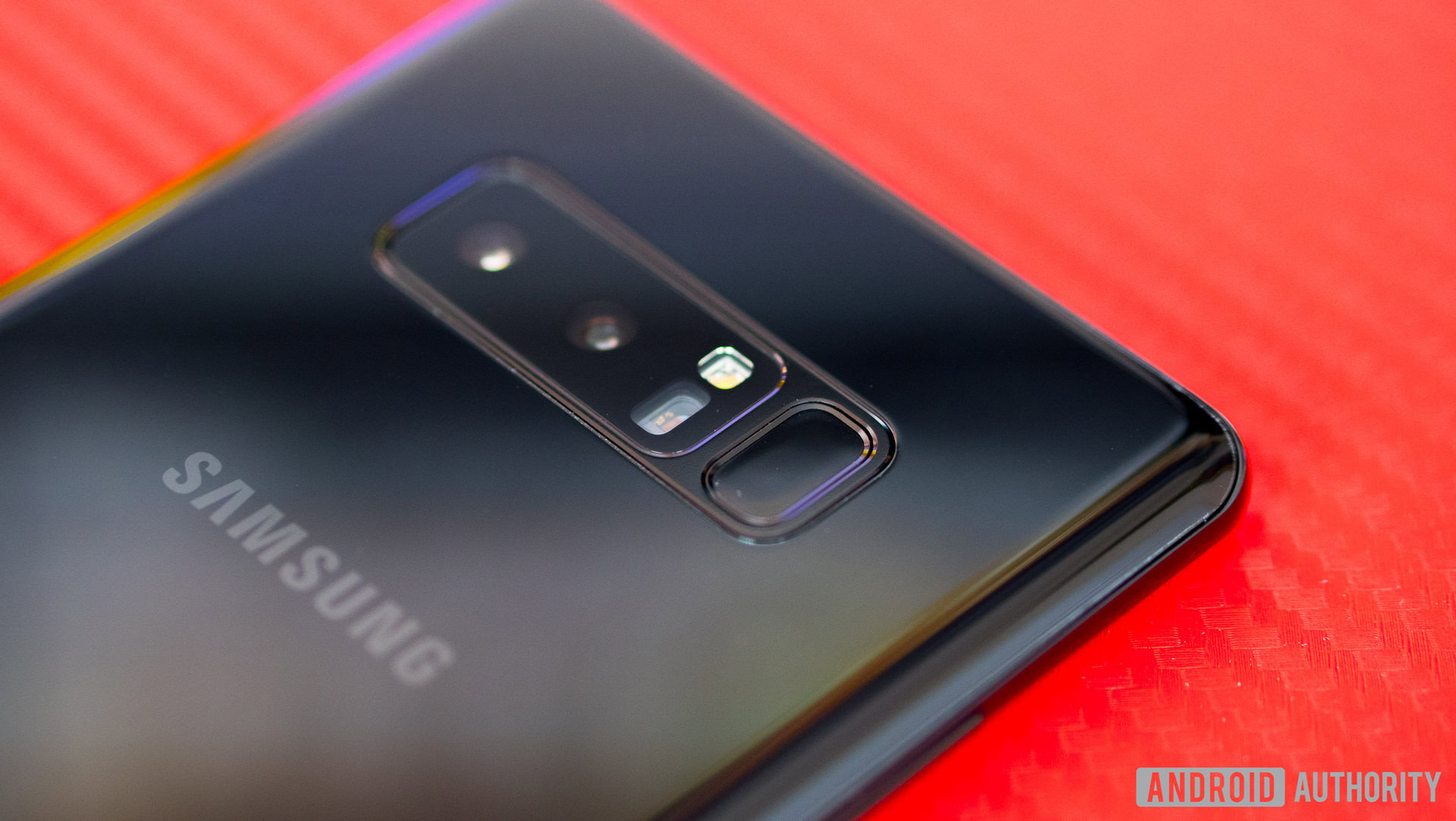
These minor changes definitely make a huge difference as smudging the camera lenses is a much rarer occurrence. But while Samsung’s changes to the fingerprint sensor are appreciated, its location still desperately needs to change to a friendlier position.
If you’re still not a fan of the fingerprint sensor, Samsung’s alternate unlocking methods such as facial recognition and the iris scanner are available. While I personally prefer the fingerprint sensor as my main way of unlocking the Note 8, the iris scanner and facial recognition are just as reliable in terms of accuracy.
My biggest concern and probably a main concern of many during the Note 8’s official announcement was how long this phone would last on a single charge. It has a 3,300 mAh cell which by 2017 standards is by no means small but is smaller than what we would have expected for a phone with such powerful specs and massive 6.3-inch QHD+ display.
Battery life on the Galaxy Note 8 has been far better than anticipated, even at QHD+ resolution.
In my experience, battery life on the Galaxy Note 8 has been far better than anticipated. Screen-on time is typically around the five hour mark with anywhere between 15 to 18 hours off the charger allowing me to comfortably get through a full day.
By no means am I a light user when it comes to smartphones either. Along with the usual social media, emails, and web browsing, I play games and watch YouTube for several hours per day and the Note 8 has managed to satisfactorily meet my needs. This was also all while running the screen at QHD+ resolution which didn’t seem to make as much of an impact on the battery life as I might’ve thought.
Camera
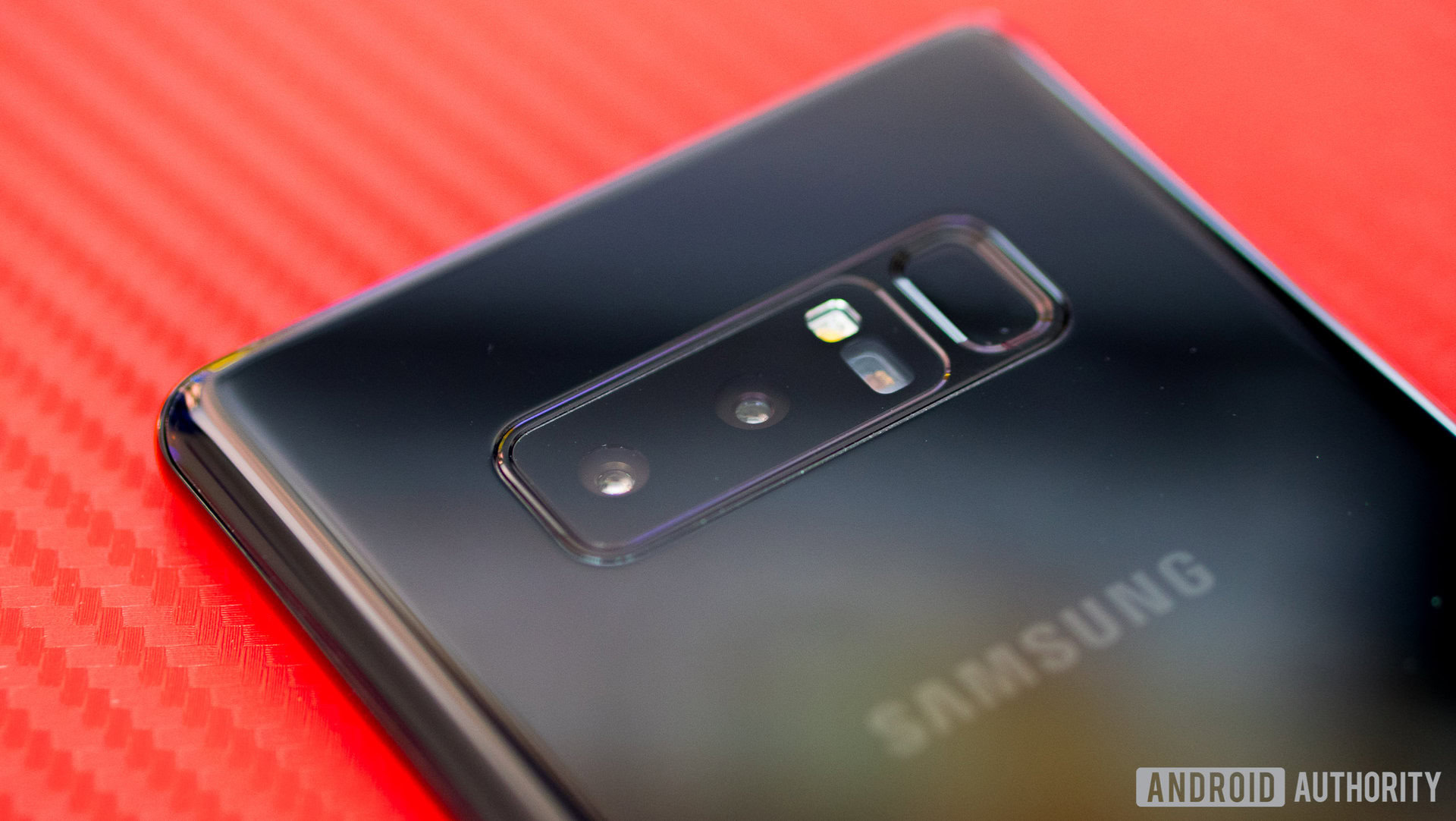
One of the more drastic changes to the Note 8 this year is the addition of dual cameras on the back.
One of the more drastic changes to the Note 8 this year is the addition of dual cameras on the back, a feature that is becoming increasingly more popular on smartphones.
It was only a matter of time before Samsung jumped on the bandwagon and they couldn’t have picked a more perfect phone on which to to do it. The Galaxy Note 8 camera utilizes a wide angle and telephoto lens setup similar to the iPhone 7 Plus or the OnePlus 5 and the secondary telephoto lens allows the Note 8 to achieve 2X optical zoom.
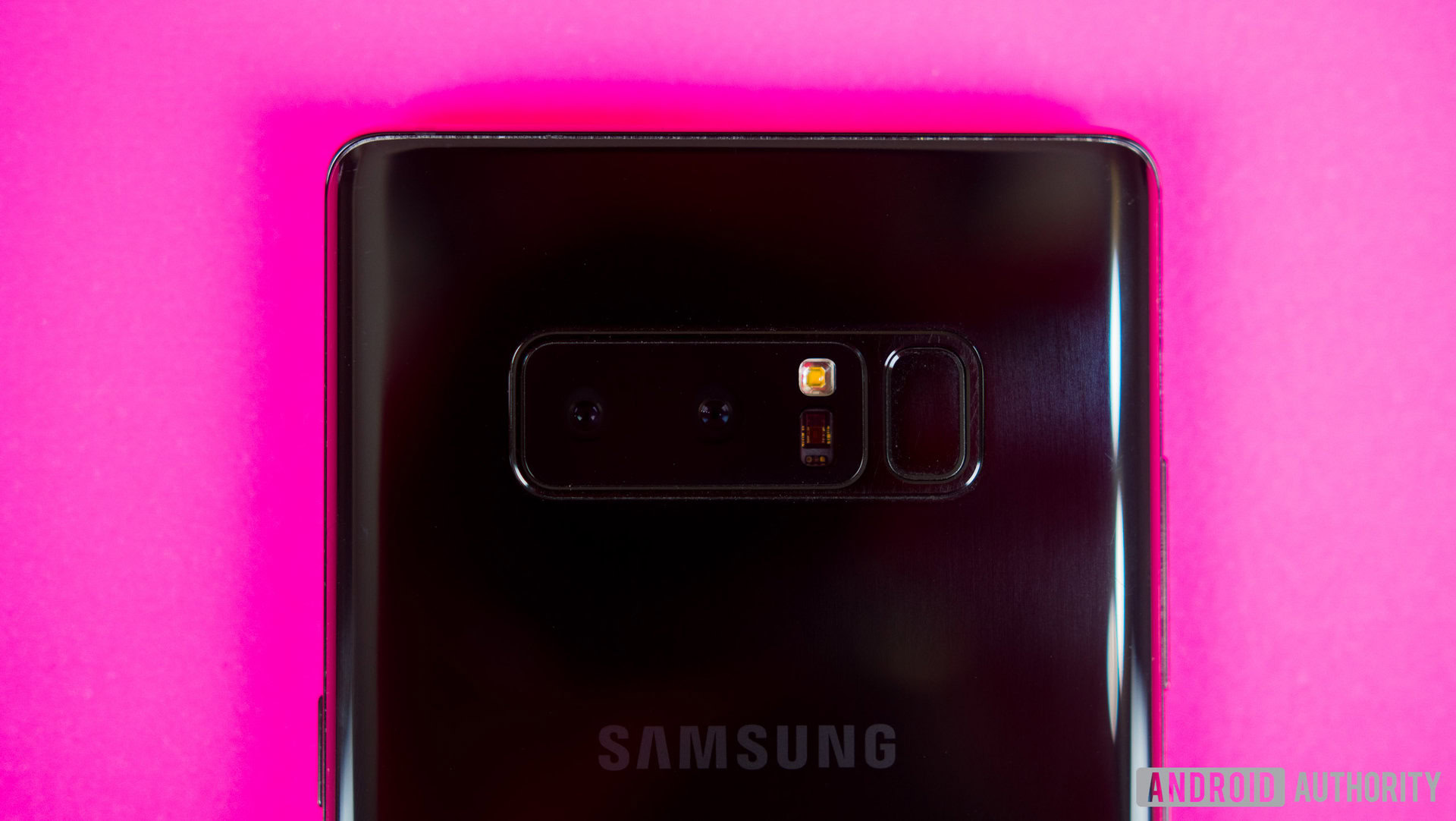
Both sensors are 12 MP with f/1.7 aperture on the main sensor and f/2.4 on the secondary, but Samsung’s super fast dual pixel autofocus is only available on the main camera. Both sensors feature optical image stabilization, which is a first for any smartphone utilizing dual cameras and guarantees that all of your photos and videos are optically stabilized regardless of which lens you decide to use.
Both sensors feature optical image stabilization, which is a first for any smartphone utilizing dual cameras.
While the ability to instantly zoom in by 2X is available on the viewfinder at all times, the caveat is it isn’t always optical. If the camera detects that the lighting situation isn’t optimal, the camera will not switch lenses. This behavior is intentional though, as the camera software decides that sometimes better results can be achieved through the main sensor. Other phones like the iPhone 7 Plus and OnePlus 5 react the same way.
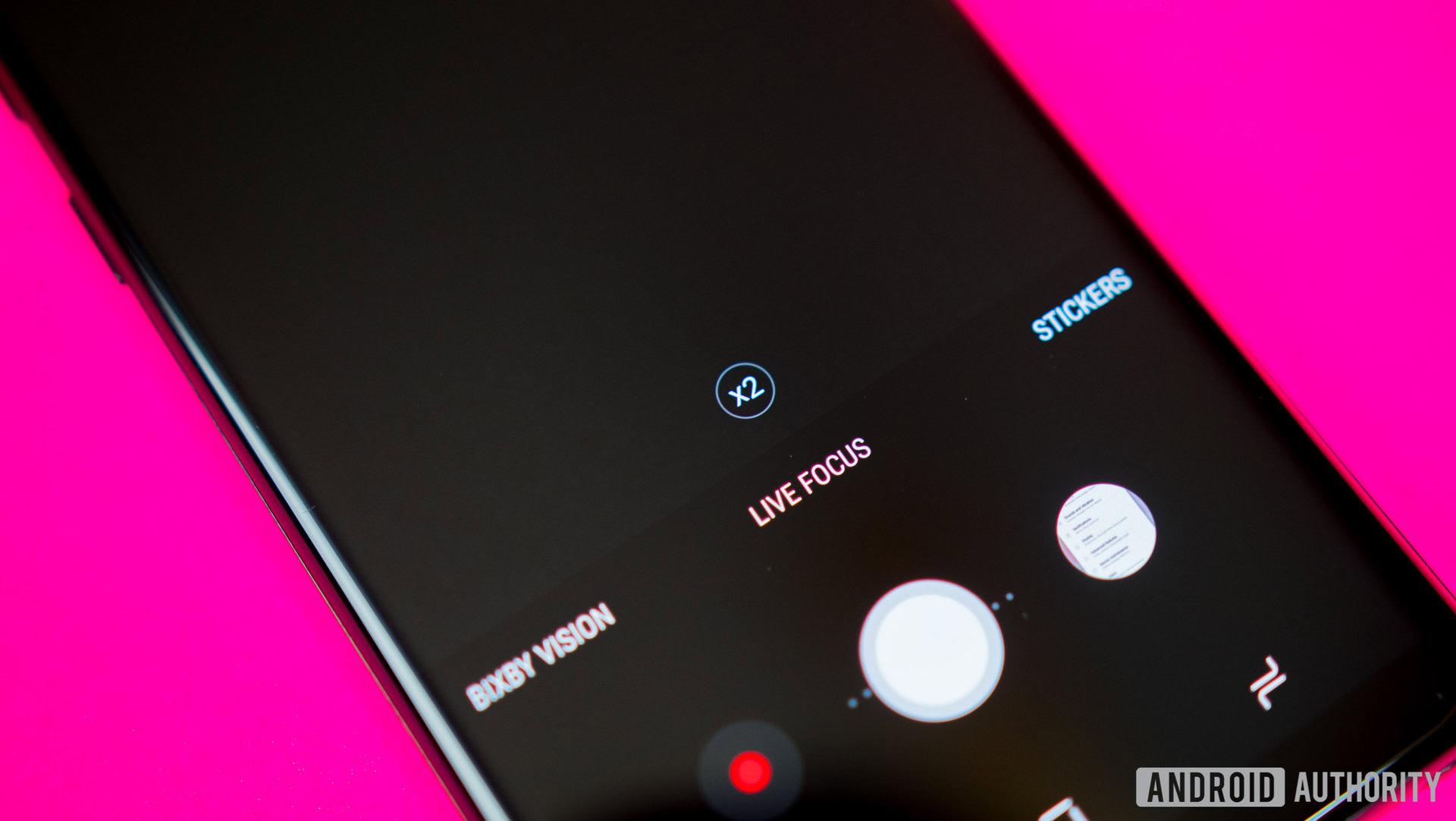
Aside from optical zoom, the secondary sensor is being leveraged to create a depth effect or bokeh that we’ve seen from many smartphones using dual cameras. Samsung is calling their take on it “Live Focus” as it allows you to adjust the background blur before you take the shot and adjustments can also be made after the fact as well.
My favorite part of the Live Focus mode is the ability to dual capture. This means that a photo is simultaneously captured from both the wide and telephoto lens with only a single press of the shutter button, saving you the hassle of switching back and forth between lenses when you want to capture two focal lengths of the same subject.
With the exception of the new 2X zoom button, Samsung’s camera app remains practically identical to the one found in the S8. There’s a handful of shooting modes such as panorama, slow motion, virtual shot, and a pro mode for full manual controls but the experience isn’t overwhelming. The camera app is also packed with a wide variety of image filters and snapchat-esque effects that adds a unique level of creativity and fun to the camera.
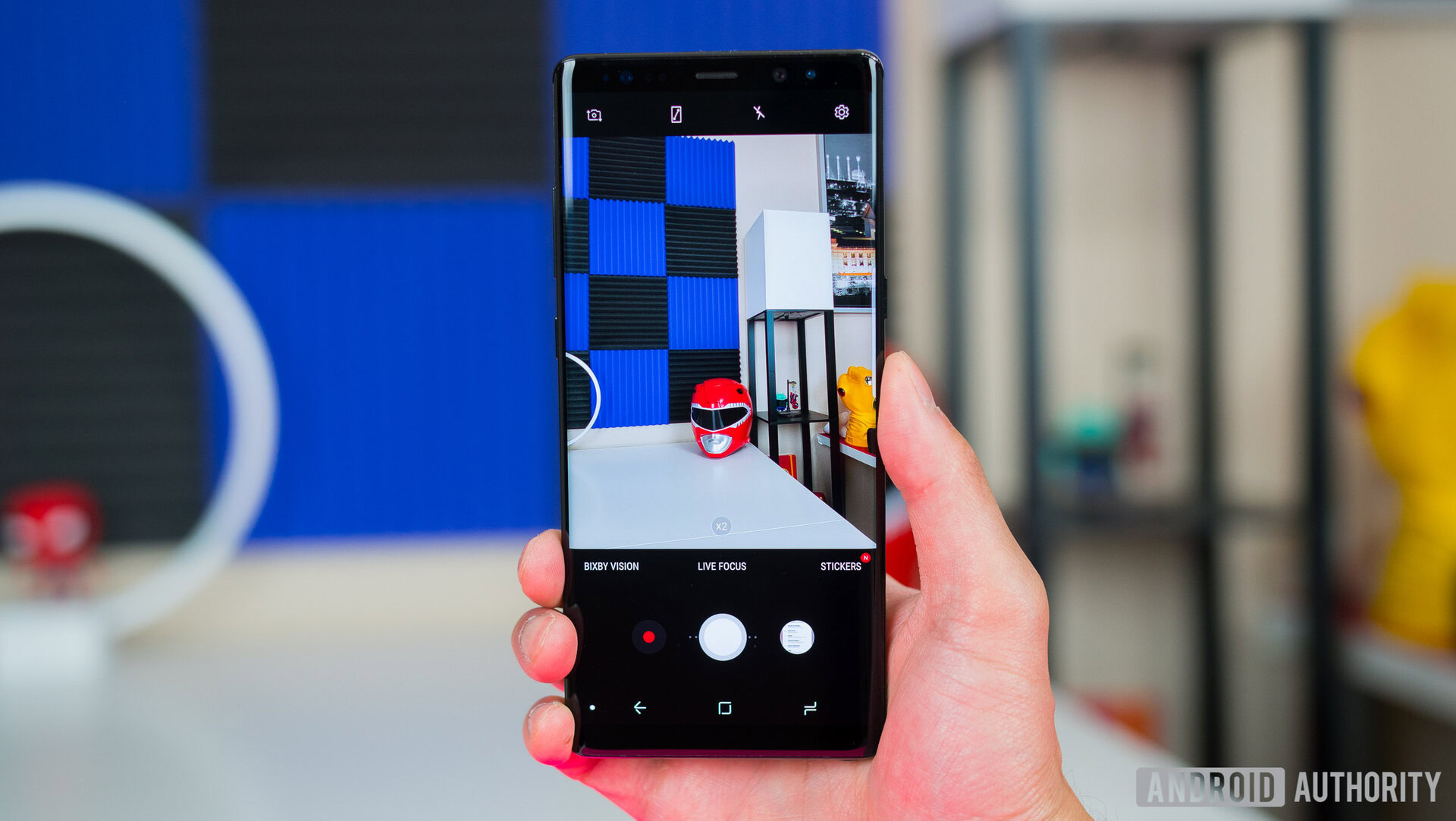
General picture quality isn’t much different from what we’ve already seen on the Galaxy S8 but by no means is that a bad thing. It’s usually pretty safe to assume that you’re getting a great camera experience with a Samsung flagship and the Note 8 doesn’t fall short of that expectation. Photos from the Note 8 are packed with detail, vibrant colors, and some of the best dynamic range offered on a smartphone.
Optical image stabilization along with fast dual pixel autofocus, makes it easy to capture photos with tack sharp focus in a reliable fashion.
The optical image stabilization along with the fast dual pixel autofocus makes it easy to capture photos with tack sharp focus in a reliable fashion. This also allows for photos in low light to maintain plenty of detail and the camera’s good dynamic range prevents highlights in night time scenery from being overblown. It’s only in the worst of low light situations that noise starts to be noticeable, but for the most part Samsung’s image processing keeps the images quite clean.
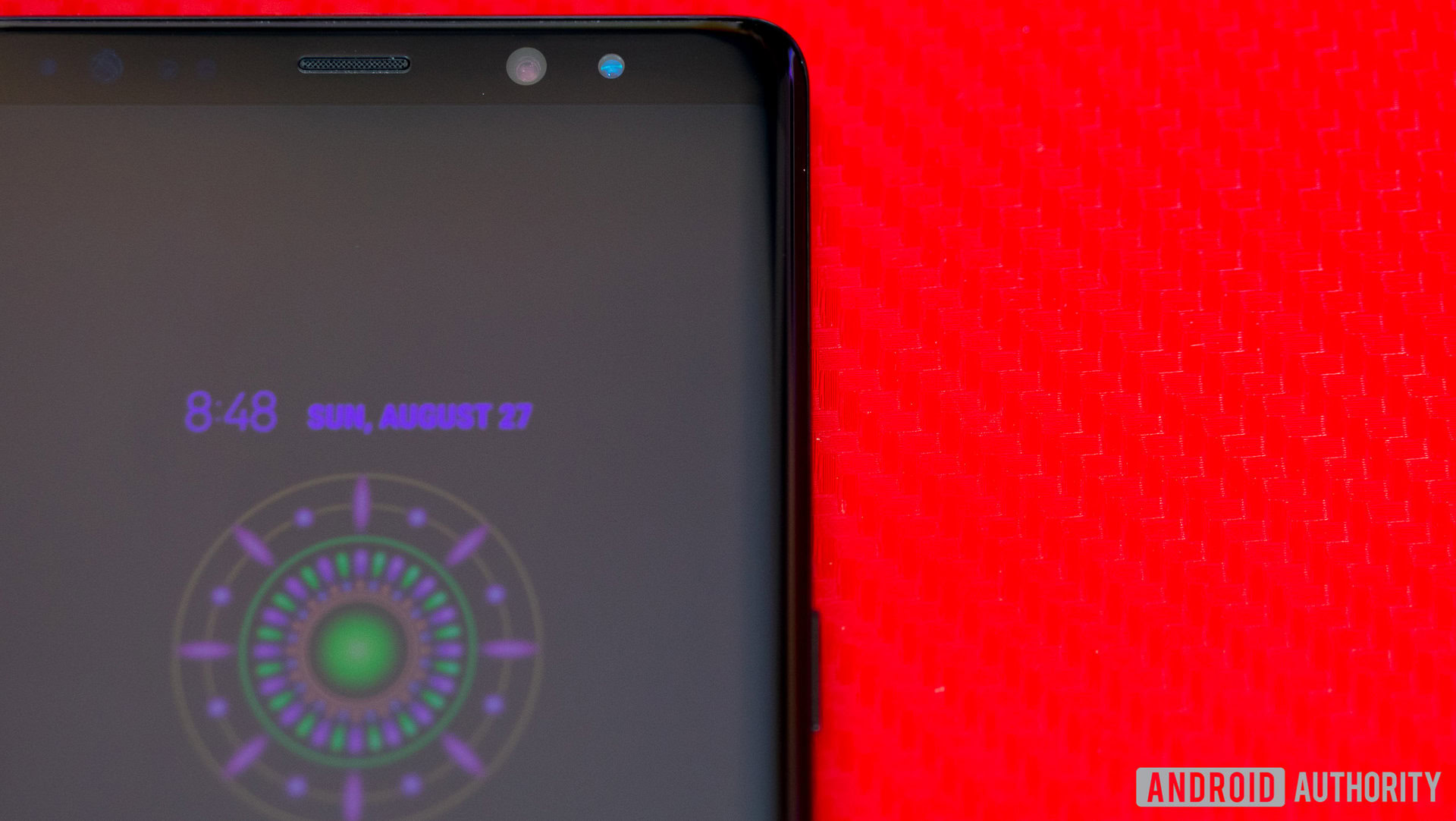
On the front of the Note 8 there’s an 8 MP front-facing shooter that offers Samsung’s smart autofocus for sharper and clearer selfies, but Samsung’s softening at times can be aggressive causing too much detail in the face to be lost.
Software
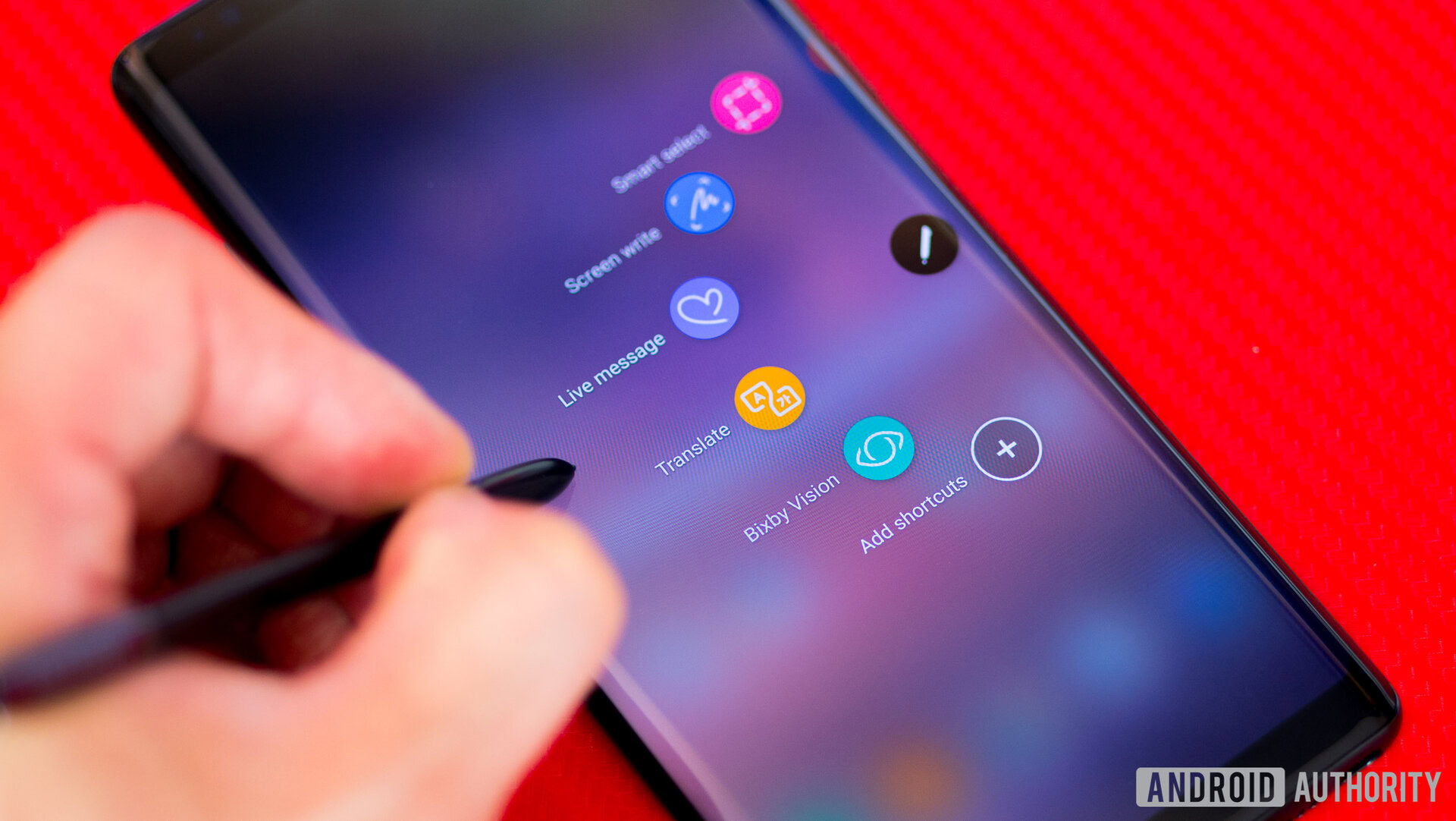
The Galaxy Note line has always offered a slightly tweaked version of the software found in the Galaxy S flagship and with the Galaxy Note 8, the experience is largely the same as that found on the Galaxy S8 with a few key changes. The ultimate productivity device brings the now-familiar S Pen menu that pops up whenever you detach the pen (or when you click the button while hovering over the screen). With it comes a refinement in the features of Samsung’s stylus.
There’s not a lot new with the S Pen this year, with Samsung instead choosing to listen to user feedback and simply tweak a few features. The useful translate feature just got a lot more useful with the ability to now translate full sentences, whereas you could only translate individual words before. The Galaxy Note 8 also comes with the Pen Up coloring-in app preloaded, which offers access to a community of millions of Galaxy Note users around the world and tons of helpful presets for you to color in and create with.
The biggest new S Pen feature is Live Message, which lets you add a little flair to your everyday communication.
The S Pen also has some handy productivity features and last year’s Screen Off Memo has been improved so you’re now able to write up to 100 pages of notes, edit them and pin them to the Always On Display, which is one of the fastest ways to jot down something when you’re in a hurry.
The biggest new feature is Live Message, which lets you record the pen strokes of writing a short message, turning it into an animated GIF. Added effects like sparkles and neon lighting add more flair and the effect is pleasing GIFs that you can send to friends and anyone else. It’s not exactly productive but it’s fun and practical and lets you add personality to your daily communication.
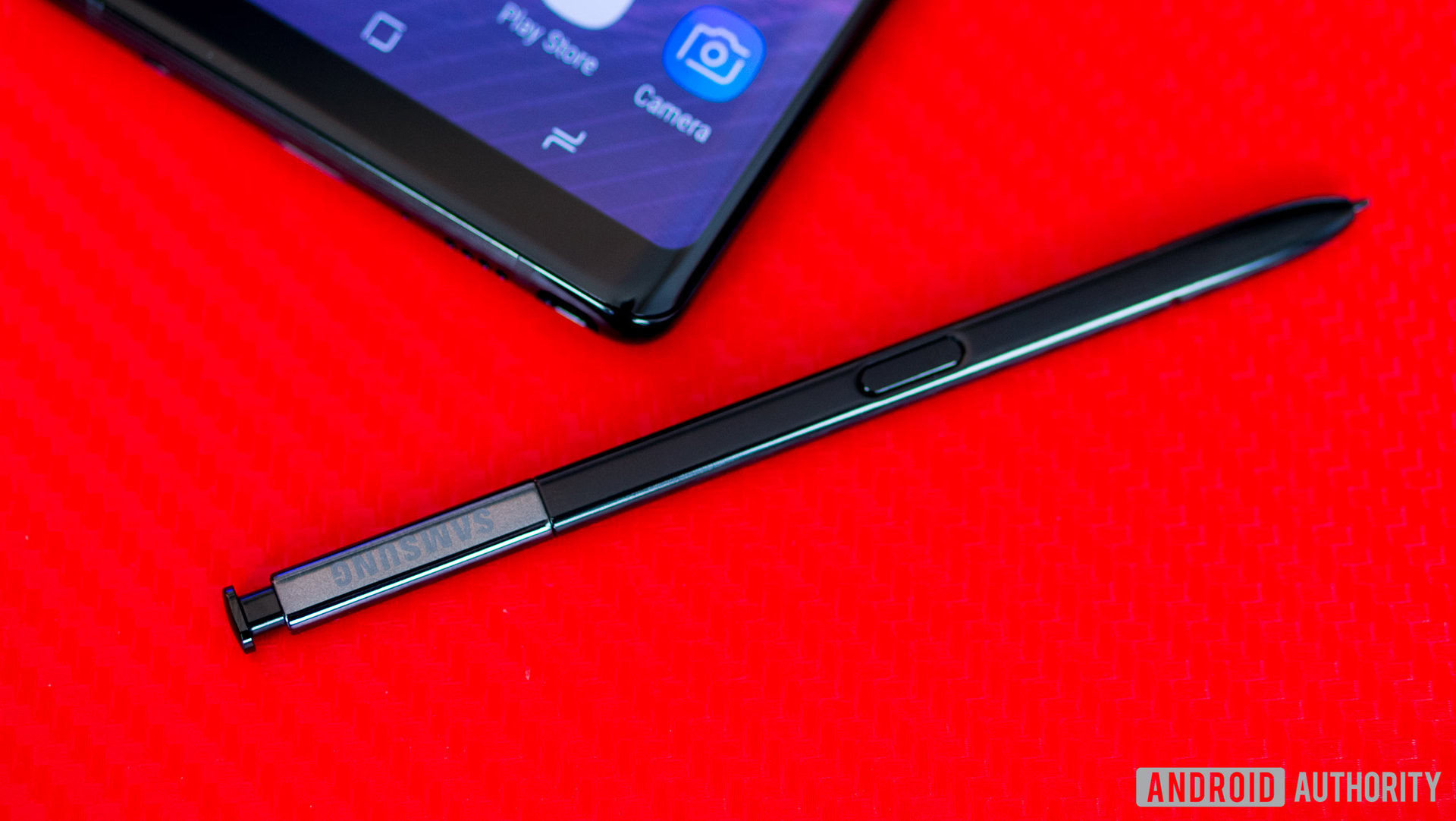
Samsung is hoping the Galaxy Note 8 is the perfect multitasking tool and the new App Pairing feature definitely lets you take full advantage of the large screen. This lets you pair two apps together and save the shortcut to your Apps Edge or to the home screen; when pressed, both apps open together in Multi Window. Imagine a shortcut to let you open the calendar and Gmail together for increased productivity or Facebook and WhatsApp messenger for constant communication. App Pairing is great if you often find yourself switching between apps and is a subtle but clever addition.
The last notable feature in the Galaxy Note 8 may not be new but it is useful for those that have multiple social accounts. Called Dual Messenger, it lets you create multiple instances of the same single-account app (such as Facebook, SnapChat or WhatsApp) on the one phone, so you no longer need multiple phones to be able to use two numbers with WhatsApp or a personal and professional Facebook profile. It won’t be for everyone and Samsung wasn’t first (we saw it on the HUAWEI Mate 9 last year), but if this is a problem that affects you, Dual Messenger could be the answer.
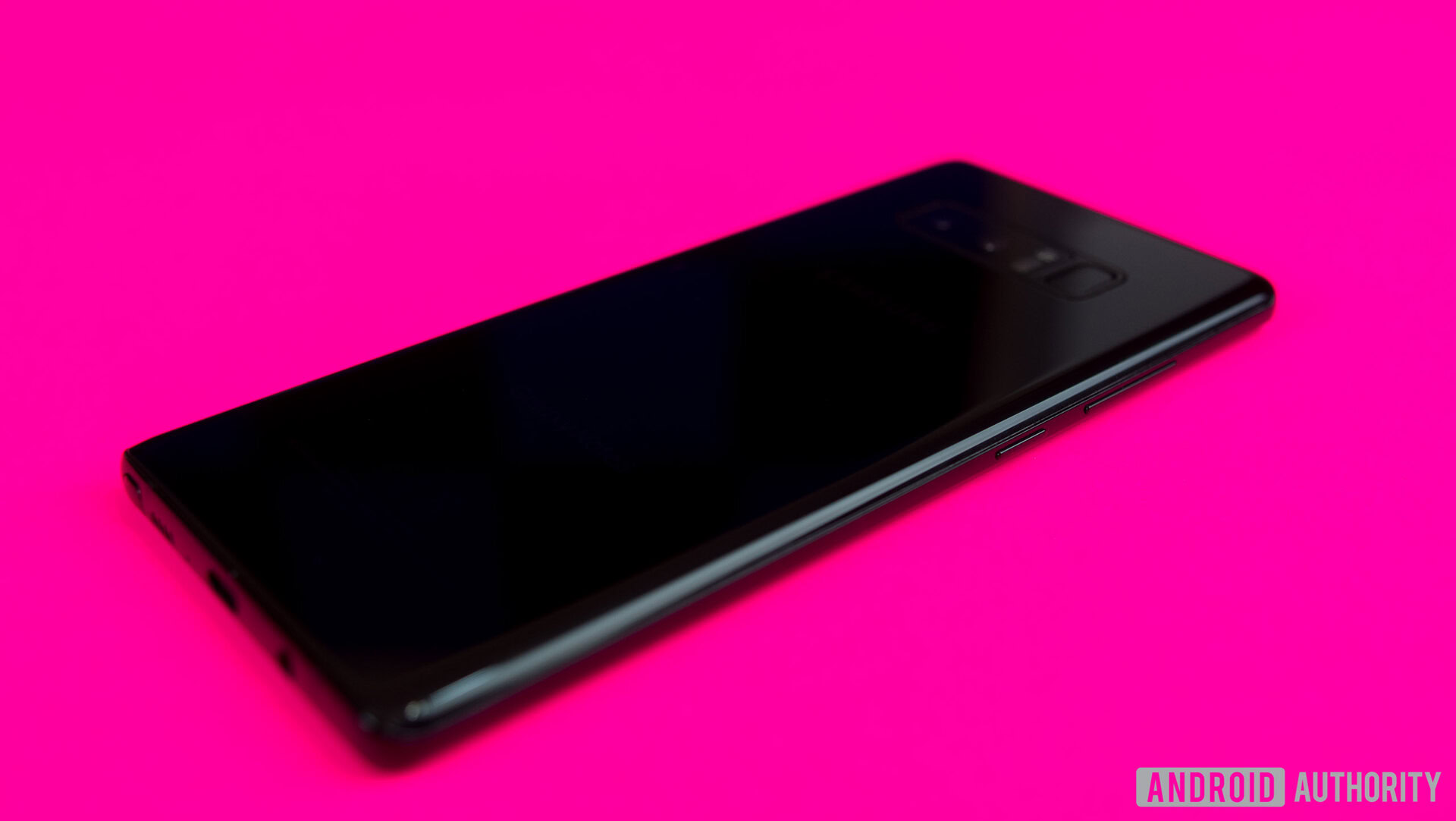
With the introduction of the Galaxy S8, Samsung brought their own AI assistant, Bixby, into the fold and that feature has now made its way over to the Note 8. This includes the dedicated quick-access hardware button that sits just below the volume rocker. On the Note 8 you get the full Bixby experience out of the box including Bixby Voice. Bixby has certainly made some great strides since the Galaxy S8 but it still has its issues.
When it works, Bixby is fantastic and Samsung has it going in the right direction, but it still needs some polishing.
Bixby works wonderfully for doing phone-related tasks such as changing the screen brightness or having the phone download an app off the Play Store for you, but for factual or internet-related questions the experience can still be hit or miss. Most times it’s purely due to Bixby struggling to understand your every word to properly formulate a response.
When it works, Bixby is fantastic and Samsung has it going in the right direction, but it still needs some polishing. The bright side is that you have Google Assistant to fill in where Bixby falls short, allowing you to get the best of both worlds.
The main drawback to the Note 8’s software is that it’s launching with Android Nougat and while Nougat is still very current, with Android 8.0 Oreo being official it does make you wonder when the Note 8 is going to get the update. Hopefully it happens sooner rather than later because it would be a shame for a phone as current as the Note 8 to fall behind in software updates right out of the gate.
With every new Galaxy device, we see a smartphone UI that's consistently getting better, and growing into one of the best on the market.
These changes and tweaks aside, the rest of Samsung’s UI is all about software refinement. The software on the Galaxy Note 8 looks similar to the Galaxy S8, with very few changes in appearance but that’s not a bad thing. Samsung has improved its interface over the past few iterations and with every new Galaxy device, we see a smartphone UI that’s consistently getting better, and growing into one of the best on the market.
Specifications
| Samsung Galaxy Note 8 | |
|---|---|
Display | 6.3-inch Quad HD+ Super AMOLED Infinity 2960 x 1440 resolution 521 ppi 18.5:9 aspect ratio |
Processor | US: 64-bit octa-core (2.35 GHz Quad + 1.9 GHz Quad) Qualcomm Snapdragon 835, 10 nm processor Global: 64-bit octa-core (2.3 GHz Quad + 1.7 GHz Quad) Samsung Exynos 8895, 10 nm processor |
RAM | 6 GB LPDDR4 |
Storage | 64/128/256 GB MicroSD expansion up to 256 GB |
Cameras | Rear camera - Main: 12 MP wide-angle AF Dual Pixel sensor with ƒ/1.7 aperture, OIS - 12 MP telephoto AF sensor with ƒ/2.4 aperture, OIS Front camera - 8 MP AF sensor with ƒ/1.7 aperture |
Battery | 3,300 mAh Non-removable Fast charging on wired and wireless WPC and PMA wireless charging |
Water resistance | IP68 dust and water resistance |
Connectivity | Wi-Fi 802.11 a/b/g/n/ac (2.4/5 GHz) VHT80 MU-MIMO 1024QAM Bluetooth v5.0 (LE up to 2 Mbps) ANT+ USB Type-C NFC, MST Location: GPS, Galileo, Glonass, BeiDou |
Sensors | Accelerometer Barometer Fingerprint Sensor Gyro Sensor Geomagnetic Sensor Hall Sensor Heart Rate Sensor Proximity Sensor RGB Light Sensor Iris Sensor Pressure Sensor |
SIM | Nano SIM |
Software | Android 7.1.1 Nougat |
Dimensions and weight | 162.5 x 74.8 x 8.6 mm 195 g |
Gallery
Pricing & Final Thoughts
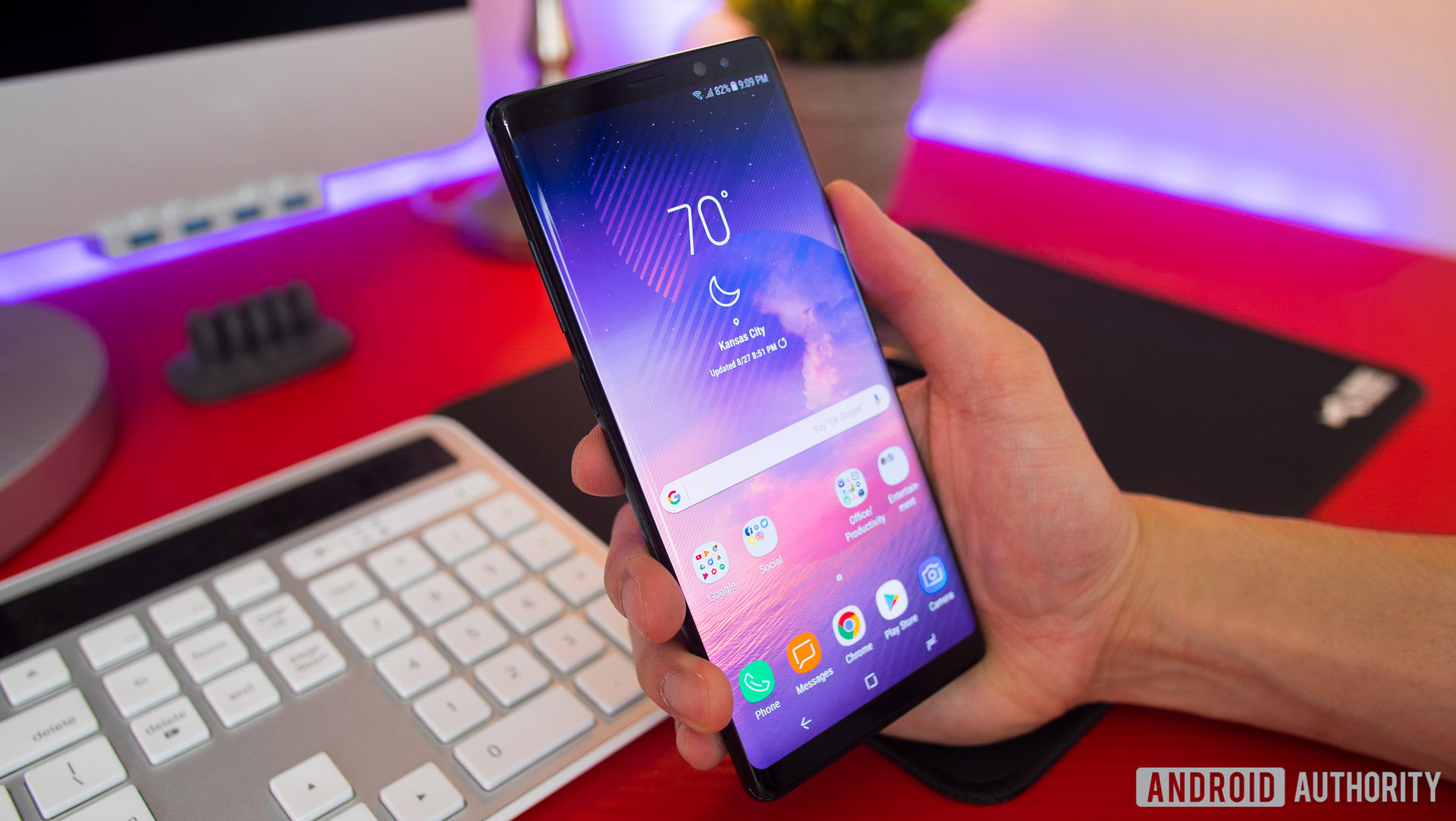
There isn’t a whole lot fundamentally wrong with the Galaxy Note 8 and save for a few minor issues like the fingerprint sensor placement, the Note 8 offers enough firepower to satisfy Note users old and new. The experience that the Note 8 offers is fantastic, but despite how good the Note 8 is, most people including the most die-hard of Note fans will probably find the price this year to be extremely hard to stomach. It’s the most expensive Galaxy Note we’ve seen to date with a starting price of $930 dollars unlocked for the base model and can run as high as $960 dollars through U.S. carriers and €999 in Europe.
The Note 8 is as exciting a phone as many people, myself included, expected it to be but Samsung might have fizzled out some of that excitement with its hefty price tag.
The Galaxy Note is always one of the most exciting smartphone releases each and every year and even more so this year simply because we were unsure if there would even be another Galaxy Note after last year’s disaster. The Note 8 is as exciting of a phone as many people, including myself, expected it to be but Samsung might have fizzled some of that excitement with its hefty price tag. If you buy one will you regret it? Most likely not, but you might have to think twice about dropping that amount of cash before you do.
And that’s it for our Samsung Galaxy Note 8 review. What do you think of Samsung’s latest Note? Let us know in the comments.